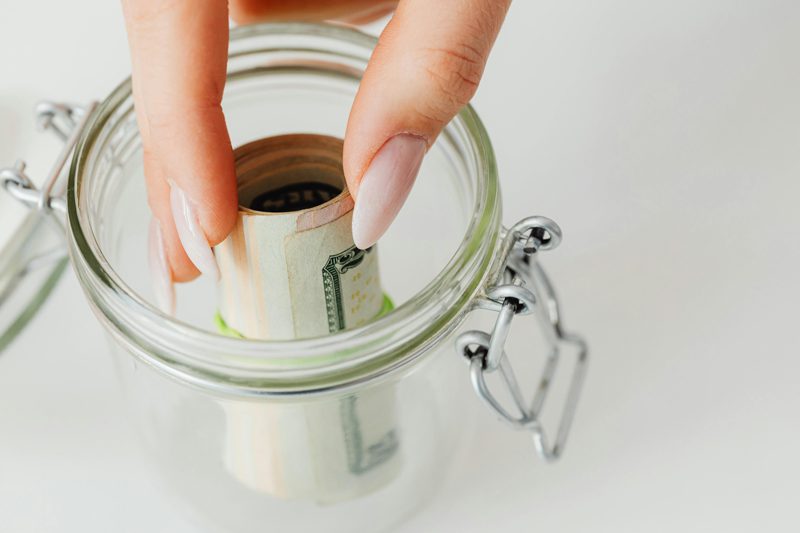As you approach 30, it’s natural to start thinking about your financial future and how much money you should have saved by now. While there’s no one-size-fits-all answer to this, it’s important to check in on what progress looks like for you. Your unique financial circumstances—including your income, expenses, and current savings—will shape your goals now and moving forward.
By focusing on building a strong financial foundation in your 30s, you’ll set yourself up for success in your 40s, 50s, and beyond. Let’s explore some key factors to consider when determining how much money you should have saved by 30, along with practical tips on reaching your savings goals.
How Much Should I Have Saved for Retirement by 30?
Many financial experts, including Fidelity, recommend saving at least 1x your annual salary for retirement by the time you’re 30. So, if you’re a 30-year-old making $70,000 per year, you should aim to have $70,000 stashed in your retirement accounts.
An often-cited rule of thumb is to save 10-15% of your income for retirement. Charles Schwab notes, however, that if you’re just starting to save for retirement at 30, you should strive for a savings rate closer to 13-18% of your gross annual income. Remember that it’s crucial to start saving for retirement as early as possible to benefit from compound interest and the potential for greater long-term growth.
How Much Should I Have Saved in My Emergency Fund by 30?
The size of your emergency fund should scale with your expenses rather than your age. Most experts suggest that you save at least three to six months’ worth of living expenses in an emergency fund at any point in your adult life. If your expenses are $3,000 per month, for example, your emergency fund should be somewhere between $9,000 and $18,000.
This guideline isn’t set in stone. If you have unique life circumstances—maybe you have an expensive health condition or a high annual salary that would be difficult to replace—you may want to aim for a larger savings cushion, just in case. You can also consider putting your emergency fund into a high-yield savings account, where rates can be as high as 10x the average APY for regular savings accounts (a mere 0.46% as of this writing).
It’s important to start saving for your emergency fund early and regularly, making consistent contributions over time. Don’t get intimidated by large “goal” numbers; start small and work your way up, reminding yourself that every little bit helps.

5 Steps to Maximize Savings in Your 30s
In your 30s, it’s important to start thinking about long-term financial goals. This decade is a pivotal time to build a strong foundation for your future security. By maximizing your savings and making smart financial decisions, you’ll set yourself up for success in the years to come.
1. Set Monthly and Annual Targets
Goal setting is a foundational tenet of personal finance for good reason. Having achievable, realistic monetary goals creates a sense of purpose and can motivate you to take action. With a goal in mind, you have a clear idea of what you’re working toward, which helps you stay focused and on track.
When you set specific savings targets on a monthly and annual basis, you can see your progress take shape in real time and avoid the common budgeting myths that derail progress. This can be extremely motivating, making it easier to stay consistent.
What might those savings targets look like? Here are some hypotheticals:
Examples of Monthly Savings Targets:
- Save 20% of your monthly income toward your retirement fund
- Save $200 in a high-yield savings account toward an emergency fund
- Save $100 for a vacation, home repair, or other short-term goal
Examples of Annual Savings Targets:
- Max out contributions to tax-advantaged retirement accounts, like a 401(k) or IRA
- Save at least three times your monthly income by the end of the year for an emergency fund
- Save $5,000 to put toward a down payment on a home, new car, or other long-term goal
2. Automate Your Savings
Automating your savings lets the funds build up without having to actively think about it. Set up a recurring transfer from your checking account to your savings account on a regular basis, such as every other week or on a certain date each month. You might also be able to have your employer send a portion of your direct deposit paycheck straight into your savings account.
Don’t forget about retirement, either: Through most brokerage or workplace benefit apps, it’s easy to automate contributions to your 401(k), IRA, and/or other investment accounts.
3. Maximize Your Retirement Contributions
Automating your retirement contributions is only one part of the equation. You should also be maximizing them. Remember that time is your best friend when it comes to saving for retirement; the more you contribute when you’re young, the more you’ll make the most of compound growth over time.
If your employer offers a 401(k) plan, you can contribute up to a maximum of $23,500 in 2024. (An additional $7,500 catch-up contribution is available for those over age 50). You should also take full advantage of any available employer match, as this is essentially an offer of free money.
Plus, your 401(k) contributions will be excluded from your taxable income for the year, effectively lowering your tax burden. (Note that this is not the case for a Roth 401(k), where contributions are instead taxed upfront and withdrawn tax-free in retirement.)
Outside of an employer’s plan, you could consider opening an Individual Retirement Account (IRA) to further increase your retirement savings. For 2025, the annual contribution limit for IRAs is $7,000 (with a catch-up contribution of $1,000 for those over age 50). IRAs are available as traditional or Roth plans, where the former is tax-advantaged upfront while the latter is tax-advantaged in retirement.
IRAs have a few other rules to keep in mind. Roth IRAs have income phase-out ranges where your contributions may be reduced (or prohibited altogether) if you make over a certain dollar amount. There are no income limits for traditional IRAs, but the amount you can deduct from your taxable income “phases out” at certain income levels if you or your spouse are also covered by a workplace retirement plan (like a 401(k)).
4. Pay Down High-Interest Debt
You should regard paying off high-interest debt as an investment into your savings and financial future. When you pay off a high-interest debt, like a credit card bill, you’re essentially earning a guaranteed rate of return equal to the interest rate you were paying on that debt. This not only frees up more of your money to save and invest, but it will also improve your credit score, making it easier (and cheaper) to borrow money in the future.
If you’re stuck deciding between paying off high-interest debt or saving for retirement, prioritize paying down the debt first. The interest rates for credit cards can easily exceed 22%, which is much higher than what you’d typically find with mortgages, student loans, or other types of debt. By focusing on paying down these balances, you can save yourself a significant amount of money in interest payments over the long term.
5. Save More as You Make More
It may sound like common sense, but it bears repeating: As your annual salary goes up, so should the amount you sock away in savings.
The biggest detriment to this habit is lifestyle creep. As you get older and make more money, it’s tempting to spend that money on luxuries, non-essentials, and impulse buys. And while it’s okay to treat yourself here and there, you should ideally use your higher earnings to pad your savings accounts, not your lifestyle.
Outside of luxuries, life gets more expensive as we age. The costly responsibilities of things like homeownership, starting a family, paying off debt, and saving for retirement demand our full financial attention. The $5,000 emergency fund you had at 30 may not be nearly enough of a cushion at 40. This means you not only need to re-evaluate your needs over time but also make sure you’re saving enough to cover your bases as your income levels rise.

